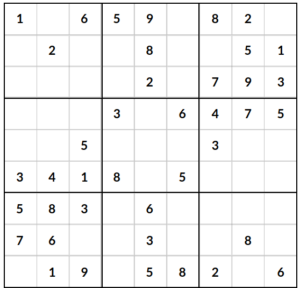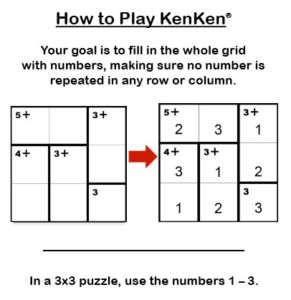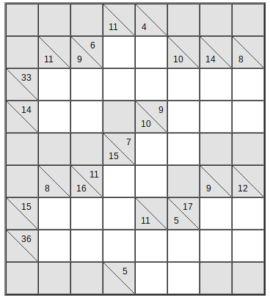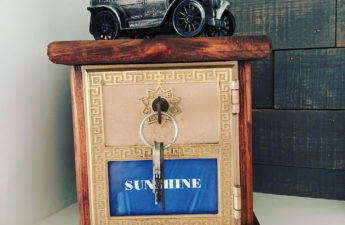
There has been a lot of discussion in recent years about making math relevant for students. Making math relevant really just means showing a student the practical purpose for math in a way that feels useful. The thinking is that kids will be more likely to take an interest in learning a particular math concept or skill if they have a reason to use it. Dan Meyer developed his dissertation around this idea and also teaches math teachers how to create the need for students to learn math, among other things.
Many of my college students would agree with this idea of making math relevant and the need to understand its purpose. When I ask them about their past math experiences, one of the most common responses is that, in school, they couldn’t really understand how math works because they couldn’t figure out the purpose and didn’t feel the need to learn something they would never use.
Has your child ever asked when he will use the math he is learning in real life? If so, he is trying to make a personal connection to math and is asking you to make it relevant for him.
I agree completely with the need for relevant learning and connections. I believe whole-heartedly that if we can create a need for learning, students will be more engaged and interested. This doesn’t apply just to math, though. I believe this idea extends to all areas of learning, from sports to music to history to writing.
BUT…(I have a good friend who says there’s always a BIG but!)
I also believe there is value in thinking about math for the sake of problem-solving and conquering challenges. Joy and a sense of accomplishment both come from figuring things out, and this is where brainteasers and puzzles come in.
Some great examples of number puzzles are Sudoku, Ken Ken, and Kakuro.
In Sudoku, your challenge is to fill a 9 by 9 grid with the digits 1 through 9 so that each digit appears only one time in each row, column, and section. Here’s an example from sudoku.com:

The challenge is finding a place to begin. Where would you start to solve this one?
There are free apps and online collections of sudoku puzzles for your enjoyment. A quick internet search will get several good results. There might be a bit of a learning curve as you figure out how each app and site works. You can also find Sudoku puzzle books at your local grocery or bookstore and online. I’ve done an amazon.com search for you here:
Easy Sudoku Medium Sudoku Hard Sudoku
If your child has experience with Sudoku puzzles and enjoys the challenge, Ken Ken is a great next step. Ken Ken takes the basic logic and reasoning of Sudoku and adds the element of calculation. Some puzzles use one of the four basic operations (+, -, x, /), while others require a combination of two or all four to solve. Where Sudoku always uses the digits 0-9, the digits in Ken Ken are determined by the size of the grid. Here is an example from kenkenpuzzle.com:

There is also a variety of free apps and online sites to play Ken Ken. I really like the app from NCTM Illuminations that is geared for kids. You can find info about it and other NCTM resources here. (NCTM is the National Council of Teachers of Mathematics, a professional organization.)
Like other types of puzzles, Ken Ken is also available in book format from a variety of places. Here are a couple of easy level collections to get you started. (Click on each image for more info.)
My current obsession is Kakuro. It’s kind of like a crossword for numbers, where each clue is the sum of all the numbers in that section. Here is a simple example from kakurosonline.com:

Kakuro combines elements from Sudoku (digits cannot be repeated within a sum), Ken Ken (each row and column must add up to the given number), and crosswords (a single digit goes in the intersection of a row and a column).
As you can tell from this example, the biggest challenge is finding a starting point. I would probably start at the top where the 4 (column) and 6 (row) intersect. There is only one way to get a sum of 4 without using the same number twice, using 1 and 3. A 1 must go in the top box because a 3 would require another 3 to get the sum of 6, and that isn’t allowed.
Can you find other places to start this puzzle?
Again, there are free apps and websites where you can solve Kakuro puzzles and there is a wide range of levels available. You can find some easy level books here.
I find that when I work number puzzles, especially when I work through a book of puzzles or focus on one kind of puzzle for a few months, is that I discover new strategies for solving them. In the case of Kakuro, I feel like I am improving my number sense every time I work a puzzle. I can almost feel my brain growing!
There are certainly a lot of number puzzles out there. I’d love to hear about your favorites in the comments!






I love using games for all sorts of learning. When I go to the used curriculum sales in the spring, my main goal is to find games. Sum Swamp is a good one – now we use it for multiplication.